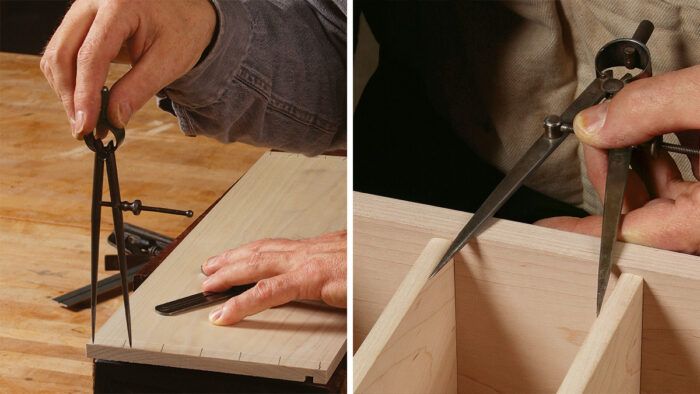How to Use Dividers
Divide and conquer distances with speed and precision with this simple layout tool.

Dividers may not get a lot of attention, but these simple little tools bring a lot to the table. For layout, stepping off distances, and comparing gaps and openings, they save time and increase accuracy, and that’s a combination that can’t be beat.
Dividers are easy to adjust, so you won’t be wasting time with scratch paper and a calculator, or squinting to count off tiny increments on a rule. And here’s the best part: you can pick up a pair at any flea market for just a few bucks.
Here I’ll show you the most common ways I use dividers. Once you’ve mastered these jobs, I’m sure you’ll think of more ways to use them in your own work.
What types, sizes to buy
The two main types of dividers are spring dividers and wing dividers. Spring dividers have a C-shaped spring or “bow” at the top, and are adjusted by a knurled nut. Spring dividers can open to about 60°. In practical terms, this means that the maximum possible setting of a pair is equal to the length of its legs.
A more versatile option are wing dividers, which are named for their wingshaped adjustment arm. They open much wider than spring dividers, making them useful for larger arcs and distances.
Both types come in a variety of sizes ranging from 4 in. to 12 in. I own multiple spring dividers sized at 4 in., 5 in., and 6 in., along with wing dividers sized at 6 in., 8 in., and 10 in. But if you don’t own any, I recommend starting with a pair of 4-in. and 6-in. spring dividers and a pair of 8-in. wing dividers. Spring dividers are much more plentiful in the smaller sizes, so it’s easy to get them on the cheap. Winged types are usually bigger, and much heavier and bulkier, which makes them tougher to use for small, delicate measuring but perfect for large-scale jobs.
For the full article, download the PDF below:
Fine Woodworking Recommended Products

Bahco 6-Inch Card Scraper

Lie-Nielsen No. 102 Low Angle Block Plane

Veritas Micro-Adjust Wheel Marking Gauge








Log in or create an account to post a comment.
Sign up Log in